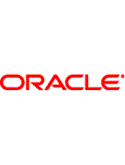
Data integration technology has evolved from simple extract, transform, and load (ETL) procedures to include real time data movement, bi-directional replication/synchronization along with data quality and data profiling. It plays a key role in data warehouses, data marts, decision support systems, data hubs and many other critical information systems, both on-premise and in the cloud. Yesterday's ETL solutions have evolved into complete data management platforms that support batch and real-time data access, heterogeneous change data capture, Web services, and zero downtime migrations and upgrades. These platforms include sophisticated technology for data movement, data synchronization, data quality and data management. In short, what was once considered mere IT "plumbing" now influences just about every aspect of IT, and touches just about every type of stakeholder. This paper examines the trends that are driving data integration technology with attention to data access, data transformation, data federation, business continuity and many other important subjects.